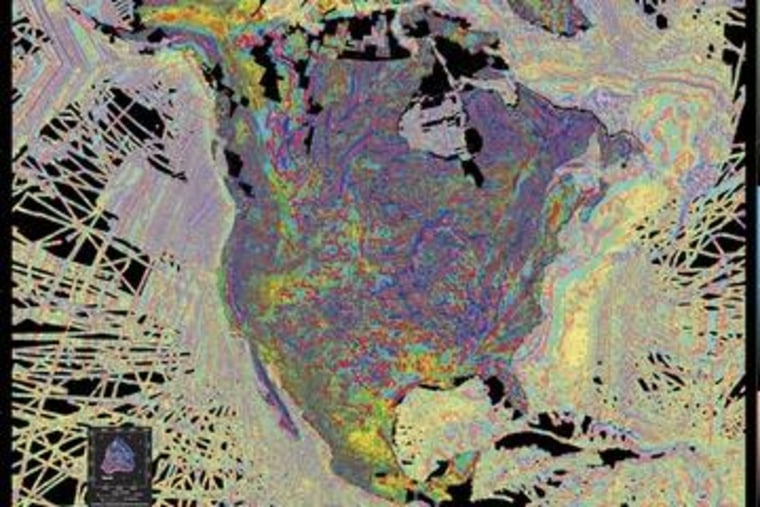The east coast of North America was once as wild as the West, with massive mountains rising between colliding tectonic plates, volcanoes belching lava and giant faults slicing the crust.
That's because millions of years ago, eastern North America was part of Gondwana and Pangaea, the supercontinents that formed as Earth's tectonic plates collided, split apart, and then crashed together again before rifting and drifting toward the spots where they're located today. Though North America's east coast is relatively quiet now, clues to these ancient tectonic mash-ups remain buried deep underground.
A new look at one of these clues reveals that a weird magnetic signal near Florida shows the peninsula stuck to North America's heel like a piece of old tape about 300 million years ago, when the central and southern Appalachian mountains were built. [In Images: How North America Grew as a Continent]

The rocks beneath Florida suggest the peninsula originally wasn't part of North America. Rather, it's a fragment of either Africa or South America, sutured onto the southeastern United States near an unusual feature called the Brunswick Magnetic Anomaly, researchers say.
The Brunswick Magnetic Anomaly is a geological feature that snakes from Alabama across Georgia, and offshore to North Carolina's Outer Banks. Anomalies in Earth's magnetic field are caused by structures such as faults, and by the varying magnetic intensities of different rock types. These slight differences in rock magnetism can be measured and mapped to find hidden geologic structures.
- Becky Oskin, LiveScience
This is a condensed version of a report from LiveScience. Read the full report. Email Becky Oskin or follow her @beckyoskin. Follow us @OAPlanet, Facebook and Google+.
- Infographic: Tallest Mountain to Deepest Ocean Trench
- Photos: The World's Tallest Mountains
- Earth Quiz: Mysteries of the Blue Marble
Copyright 2014 LiveScience, a TechMediaNetwork company. All rights reserved. This material may not be published, broadcast, rewritten or redistributed.